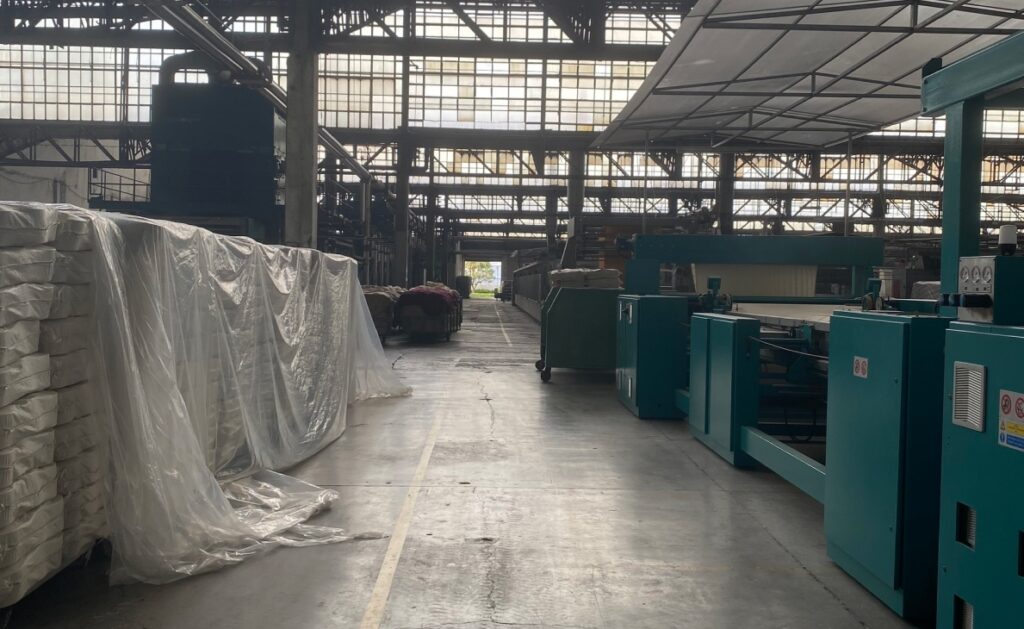Are you looking for real-world experience to operate your large-format fabric finishing machine more effectively? You’re in the right place. This guide consolidates essential tips, operating procedures, troubleshooting steps, and optimization strategies drawn from the practical experience of the global textile industry.
In textile manufacturing, the stenter or fabric finishing machine is the final quality gatekeeper. Its operation directly determines the finished fabric’s dimensional stability, feel, and durability. This guide is designed for the technicians and managers on the factory floor, providing the hands-on knowledge needed to turn this critical process into a competitive advantage.
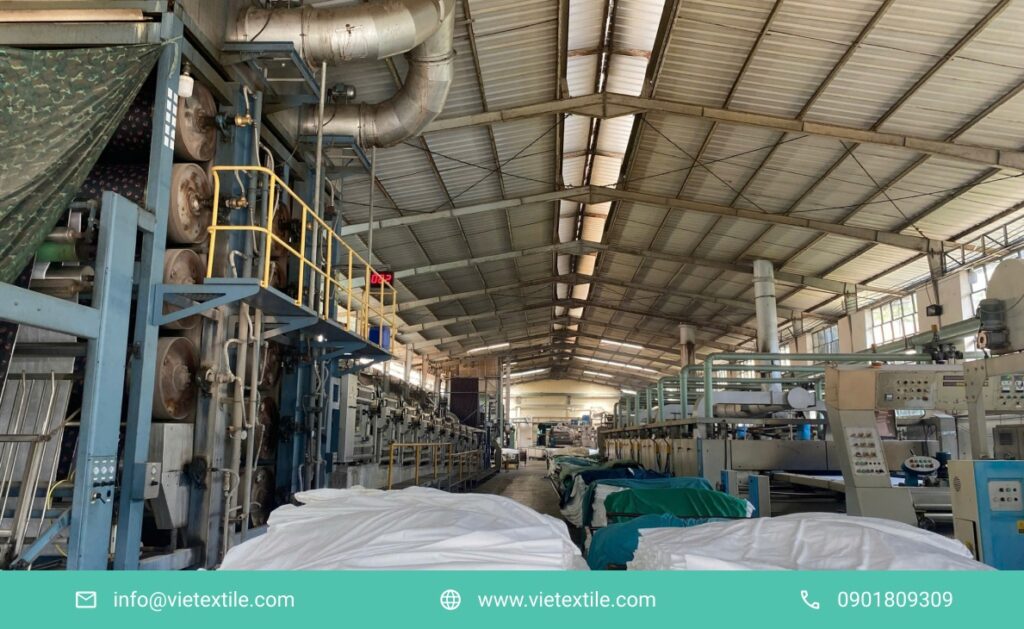
1. What is a Large-Format Fabric Finishing Machine? A Quick Recap
Nội dung tóm tắt
ToggleA large-format fabric finishing machine, commonly known as a stenter, is a piece of industrial equipment that uses a combination of heat, moisture, and mechanical tension to treat fabric after weaving or knitting. It is the core of the “finishing” process, designed to lock in the fabric’s dimensions, improve its physical properties, and prepare it for cutting, sewing, or dyeing. The importance of this stage cannot be overstated. Industry analysis shows that over 70% of post-production fabric defects, like shrinkage and warping, stem from an improper finishing process.
2. The Pre-Operation Checklist: Your First Line of Defense
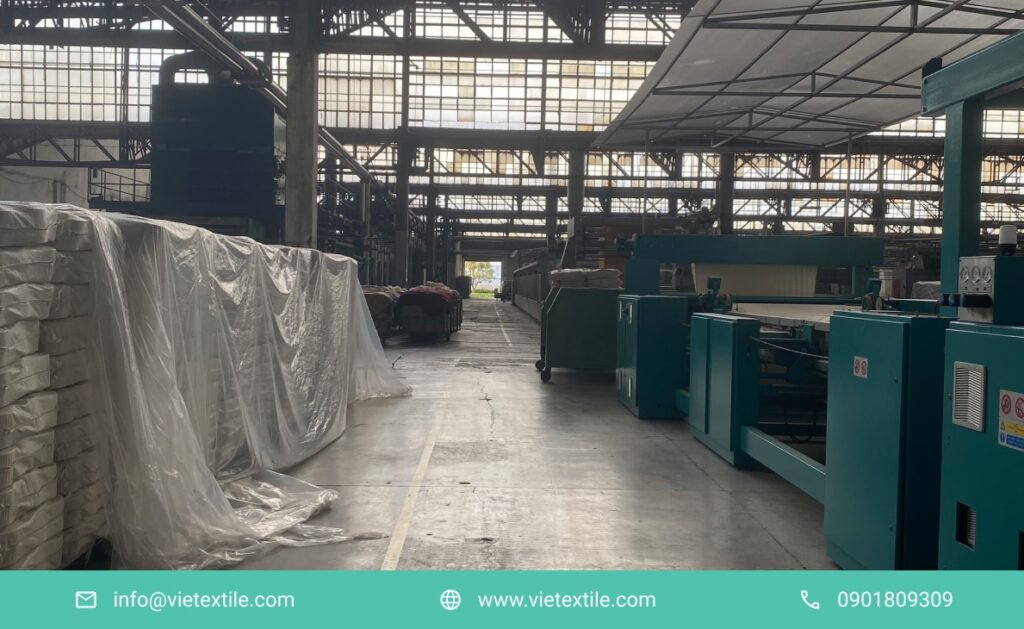
The most critical errors are often prevented before the Fabric Finishing Machine is even turned on. A disciplined pre-operation check is non-negotiable for safety and quality.
As one senior engineer from a major textile mill in Southeast Asia shared, “Countless incidents arise because operators, in a rush, fail to verify sensor readings or check the inverter settings on the PLC before startup. This is incredibly dangerous and can lead to component damage or even fires.”
To ensure a smooth and productive start to every workday in a textile or dyeing facility, your daily pre-shift checklist for the textile stenter machine should always be a non-negotiable routine. This critical inspection ensures that the Fabric Finishing Machine is ready for optimal performance, minimizing potential disruptions and safeguarding fabric quality. By consistently reviewing key operational points before production begins, you proactively identify and address minor issues before they escalate, contributing to uninterrupted workflow, enhanced efficiency, and consistent, high-quality output for your textile finishing operations.:
- Fluid & Pressure Levels: As part of your crucial daily pre-shift checklist for a textile stenter machine, verifying fluid and pressure levels is paramount for uninterrupted and quality production. Specifically, for stenters utilizing thermal oil heating, it’s essential to verify the thermal oil level to ensure consistent heat transfer and prevent damage. Concurrently, confirm that the pneumatic system has adequate compressed air pressure. This is vital for the precise operation of clips, tensioning devices, and other air-driven components, directly impacting fabric handling and dimensional stability. Diligence in these checks ensures your stenter operates efficiently, maintaining peak performance in demanding dyeing and finishing environments.
- Control Panel (PLC): As a crucial part of your daily pre-shift checklist for a textile stenter machine, always examine the Control Panel (PLC) status. It’s imperative to check the PLC screen for any lingering error codes or warning signals from the previous shift. Identifying these alerts promptly can prevent minor issues from escalating into major breakdowns, ensuring smooth and uninterrupted operation. This quick yet vital inspection allows textile and dyeing operators to address potential problems proactively, contributing to consistent fabric quality, minimized downtime, and overall operational efficiency in a high-production environment.
- Safety Systems: As an indispensable part of your daily pre-shift checklist for any fabric finishing machine, rigorously inspecting safety systems is paramount. It’s critical to confirm all emergency stops, light curtains, and safety guards are in place and fully functional. These protective measures are not merely regulatory requirements; they are vital safeguards for personnel operating in the high-temperature, fast-moving environment of textile finishing. Ensuring their proper operation before starting production minimizes the risk of accidents, protects your valuable workforce, and maintains a secure operational environment in your dyeing and garment manufacturing facility.
- Mechanical Inspection: As a vital part of your daily pre-shift checklist for optimal Fabric Finishing Machine performance, a swift mechanical inspection is essential. Specifically, perform a quick visual check of the pin or clip chains at the entry point of the machine. This ensures they are clean and free of any fabric remnants or debris from previous runs. A clear entry point is crucial for the seamless gripping and transport of new fabric, preventing potential damage to the selvedges, ensuring uniform tension, and avoiding costly disruptions in your dyeing and finishing process. This simple yet critical check helps maintain consistent fabric quality and extends the lifespan of vital components.
3. The Art of Operation: Matching Settings to Fabrics
Operating a fabric finishing machine, such as a stenter, is far more nuanced than simply pressing “start.” It’s truly an art that requires meticulously adjusting parameters for each specific type of fabric to achieve optimal results. Attempting to run a polyester fabric with settings designed for cotton, for example, will inevitably lead to a disastrous outcome, ranging from irreversible damage to the material to significant quality inconsistencies. Professional textile and dyeing facilities understand that precise control over temperature, tension, and speed—tailored to the unique properties of each fiber blend—is paramount. This meticulous approach ensures dimensional stability, ideal hand-feel, and prevents costly material waste, delivering superior finished textiles to the market..
| Fabric Type from Buyers | Recommended Temperature for Fabric Finishing Machine | Key Considerations in Production Mindset |
| Polyester | 180°C – 230°C (355°F – 392°F) | Needs high heat to achieve “heat set” memory and prevent future deformation. |
| Cotton | 160°C – 180°C (302°F – 320°F) | Lower heat is sufficient to stabilize the fibers without scorching or causing yellowing. |
| Spandex Blends | 175°C – 190°C (338°F – 374°F) | Requires precise temperature control to set the elastane without making it brittle. |
| Nylon | 165°C – 200°C (338°F – 410°F) | Sensitive to heat; over-curing can lead to a harsh feel and yellowing. |
Pro Tip: For achieving truly superior results in textile finishing, experienced technicians working with fabric finishing machine rely heavily on moisture sensors to ensure the fabric exits the machine at the optimal residual moisture level. This advanced, data-driven approach is far more accurate and reliable than solely depending on fixed time and temperature settings. By continuously monitoring the fabric’s moisture content in real-time, these sensors enable dynamic adjustments to the stenter’s parameters, preventing over-drying (which can lead to brittleness or energy waste) and under-drying (causing quality issues like mold or uneven finishing). Integrating moisture sensors is key to maximizing efficiency, ensuring consistent fabric quality, and significantly reducing operational costs in modern dye houses and garment production.
4. On-the-Floor Troubleshooting: Solving Common Problems
In the demanding environment of textile manufacturing, where fabric stenter machines with dozens of moving parts and complex electronics often operate 24/7, it’s an undeniable reality that issues will inevitably arise. The true mark of an efficient operation lies not in avoiding problems entirely, but in the ability to respond calmly and methodically when they occur. A well-trained team, equipped with troubleshooting protocols and a deep understanding of the stenter’s intricacies, can quickly diagnose and resolve faults. This methodical approach minimizes downtime, prevents further damage, and ensures consistent production quality, safeguarding your investment and maintaining efficiency in your dye house or finishing plant.
- Problem: Inverter Overheating Alarm at the monitor screen of Fabric Finishing Machine.
- What it means: In the context of a textile stenter machine, if the motor driving a fan or the main chain is under excessive strain, what it means is a critical operational alert. This usually indicates that the motor is under too much strain, signifying a potential issue like mechanical resistance, excessive friction, or an electrical overload. For dyeing and finishing plants, this warning is crucial as prolonged strain can lead to motor burnout, reduced efficiency in airflow or fabric transport, and costly downtime. Promptly identifying and addressing the root cause, such as cleaning components or checking for misalignments, is essential to protect valuable machinery and ensure uninterrupted production of high-quality fabrics..
- Immediate Action: When a Fabric Finishing Machine indicates motor overload, immediate action is crucial to prevent damage and costly downtime. The first step is to reduce the machine’s speed to lower the load on the affected motor, whether it’s driving a fan or a chain. Simultaneously, check the motor’s cooling fan for any lint buildup, as this common issue severely traps heat, causing the motor to overheat and strain. Addressing these points promptly ensures the motor cools down, reduces operational stress, and helps maintain consistent production quality in your dyeing and finishing plant without prolonged interruption..
- Problem: PLC Signal Loss or “No Response”.
- What it means: When your textile stenter machine indicates a communication error, what it means is that the central controller (PLC) has lost communication with a specific sensor or motor. This is a critical issue in modern dyeing and finishing operations, as it directly impacts the machine’s ability to receive vital feedback on parameters like temperature, tension, or motor status. Such a loss of communication can lead to imprecise control, quality deviations, and even machine shutdown. Promptly addressing these alerts is essential for maintaining consistent fabric quality and preventing costly downtime in a highly automated production environment.
- Immediate Action: When facing a communication error on your Fabric Finishing Machine, immediate action is crucial to restore operational integrity. First, perform a system reset from the main panel. This often resolves temporary glitches by re-establishing communication pathways. If the problem persists after a reset, the next critical step is to physically check the network or signal cables for loose connections or damage. These cables are vital for data transmission between the PLC and components, and any compromise can disrupt the entire system. Swiftly addressing these issues is paramount for textile dyeing and finishing plants to minimize downtime and maintain consistent fabric quality in their demanding production schedules..
- Problem: Fabric Skewing or Chain Derailment in side the chamber of Fabric Finishing Machine.
- What it means: When a textile stenter machine experiences issues related to fabric gripping or tension, what it means is a critical indication that either the fabric is not being gripped evenly, or the drive chains are out of sync. Uneven gripping can lead to inconsistent width, selvedge damage, and creasing, while misaligned drive chains cause uneven tension across the fabric, affecting dimensional stability and handfeel. For dyeing and finishing operations, these problems directly impact product quality and can result in significant material waste. Prompt diagnosis and correction are essential to ensure the Fabric Finishing Machine operates with the precision required for high-quality textile production..
- Immediate Action: Upon detecting issues with uneven fabric gripping or chain synchronization on a Fabric Finishing Machine, the immediate action in this case is paramount. The first critical step is to stop the machine immediately to prevent fabric tearing and further damage. Following this, check the entry sensors for any obstructions that might be interfering with the fabric’s precise entry and gripping. Simultaneously, inspect the chain rails thoroughly for any foreign objects or accumulated debris that could be disrupting the smooth movement and synchronization of the chains. Swiftly addressing these potential culprits ensures the stenter can resume optimal operation, safeguarding fabric quality and minimizing costly downtime in your dyeing and finishing process..
5. 3-Hidden Key Strategies for Long-Term Optimization Fabric Finishing Machine
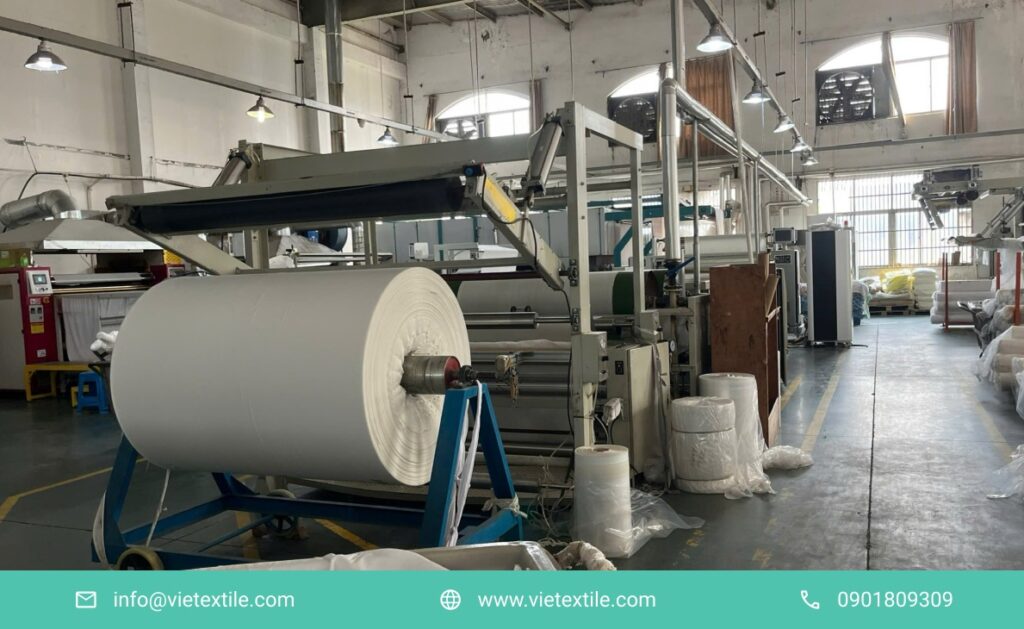
Moving beyond the scope of daily operational checks, these advanced strategies are specifically designed to maximize the long-term value and efficiency of your fabric finishing machine, particularly vital for complex equipment like Fabric Finishing Machines. By focusing on strategic planning, predictive maintenance, and continuous improvement, textile dyeing and finishing plants can ensure their machinery delivers consistent, high-quality output for years to come. This forward-thinking approach minimizes unexpected breakdowns, optimizes energy consumption, and significantly reduces overall cost of ownership, securing a stronger competitive edge in the demanding global textile market..
Strategy #1: Implementing Energy-Saving Habits
For any textile manufacturing or dyeing operation, energy stands out as undeniably one of the highest operating costs for a stenter. These crucial fabric finishing machines consume significant power, primarily for heating and fan circulation, to ensure dimensional stability and consistent hand-feel. Optimizing energy consumption through efficient heat recovery systems, precise temperature control, and smart automation is not just about environmental responsibility; it’s a critical factor in managing overheads and enhancing profitability. Savvy textile businesses actively seek out stenter technologies designed to minimize energy expenditure, recognizing its profound impact on their long-term financial health and competitive edge.
- Use the Inverter: The variable frequency drive (VFD), or inverter, allows you to precisely control motor speeds. Running fans at 80% capacity instead of 100% can result in significant energy savings with minimal impact on drying time.
- Improve Insulation: Ensure all chamber doors, panels, and ductwork are properly sealed to minimize thermal loss when running production from fabric finishing machine.
- Heat Recovery: If your machine has a heat recovery system, ensure it is clean and operating efficiently. This single feature can cut fuel costs by over 25%.
Strategy #2: Mastering Proactive Maintenance Fabric Finishing Machine
You cannot wait for a breakdown to perform maintenance. A strict, proactive schedule is essential for the longevity of your fabric finishing machine. One factory in Southeast Asia reported a 40% reduction in technical incidents after implementing the following schedule:
- Daily: Clean fabric dust and lint from chain rails, pins/clips, and entry/exit sensors.
- Weekly: Clean all fan blades and filter screens.
- Monthly: Check and top up thermal oil/lubricants. Inspect drive belts and chains for proper tension.
- Quarterly/Annually: Schedule a full service with a qualified technician to inspect motors, bearings, and electrical components.
Strategy #3: Investing in Operator Training
While advanced automation and cutting-edge technology are increasingly integrated into modern fabric finishing machines, including sophisticated textile stenter machines, it remains undeniably true that the most important component of any Fabric Finishing Machine is the human operating it. The skill, experience, and attention to detail of a well-trained operator are irreplaceable. Their ability to make nuanced adjustments based on real-time observations, troubleshoot unexpected issues, and interpret complex data ensures optimal fabric quality, minimizes waste, and maximizes the machine’s efficiency. In the demanding environment of dyeing and garment manufacturing, the human element ultimately drives the success and profitability of even the most advanced machinery.
- Technical Knowledge: Operators should be trained not just on how to run the machine, but on why certain settings are used for different fabrics. This empowers them to make smarter decisions.
- Troubleshooting Skills: Provide your team with basic troubleshooting training so they can resolve minor issues without needing to call a senior engineer, saving valuable time.
- Continuous Improvement: Host regular internal training sessions to share knowledge and review any recent technical issues.
6. Conclusion: From Operator to Artisan
Operating a large-format fabric finishing machine is more than just a technical job; it’s an art that blends practical experience with a deep understanding of technology. By mastering the pre-operation checks, tailoring your settings to each fabric, and embracing a proactive maintenance culture, you can transform this final production step from a potential bottleneck into a source of immense quality and value.
7. Your Partner in Textile Finishing Excellence
VieTextile is a trusted provider of high-technology solutions and modern equipment for the textile industry. With years of hands-on experience, we offer a range of high-quality large-format fabric finishing machines suited for diverse production needs. More than just a supplier, we partner with our clients through in-depth technical consulting, operator training, and comprehensive after-sales service to optimize your production and enhance your profitability.
Contact VieTextile today for an expert consultation on your finishing process!
8. FAQ
1. What types of fabric is a large-format fabric finishing machine best for? It is highly versatile but especially crucial for polyester, cotton, and spandex blends where controlling shrinkage and dimensional stability is critical. Success depends on precise control of temperature and tension.
2. How can I assess the quality of a used fabric finishing machine? Check the total operating hours on the PLC, inspect the condition of the pin/clip chains and rails for wear, and verify that the control system (PLC, inverters) is from a reputable brand with available support. Always request a live demonstration.
3. What is the most common cause of fabric defects during finishing? Incorrect temperature is the most common cause. Setting the heat too high can make fibers brittle or change their color, while setting it too low will fail to stabilize the fabric, leading to shrinkage later.
4. How much energy does one of these machines consume? Consumption varies greatly, but energy costs are a major factor. Modern machines with heat recovery systems and efficient gas burners are significantly cheaper to run than older, all-electric models. A factory can save over 25% on operating costs by investing in energy-efficient solutions.
5. Why is operator training so important for this specific machine? Because the operator makes constant, critical adjustments. An untrained operator might use the wrong temperature, set the fabric tension too high (causing tears), or fail to spot early warning signs of a mechanical issue, leading to costly errors and downtime.

